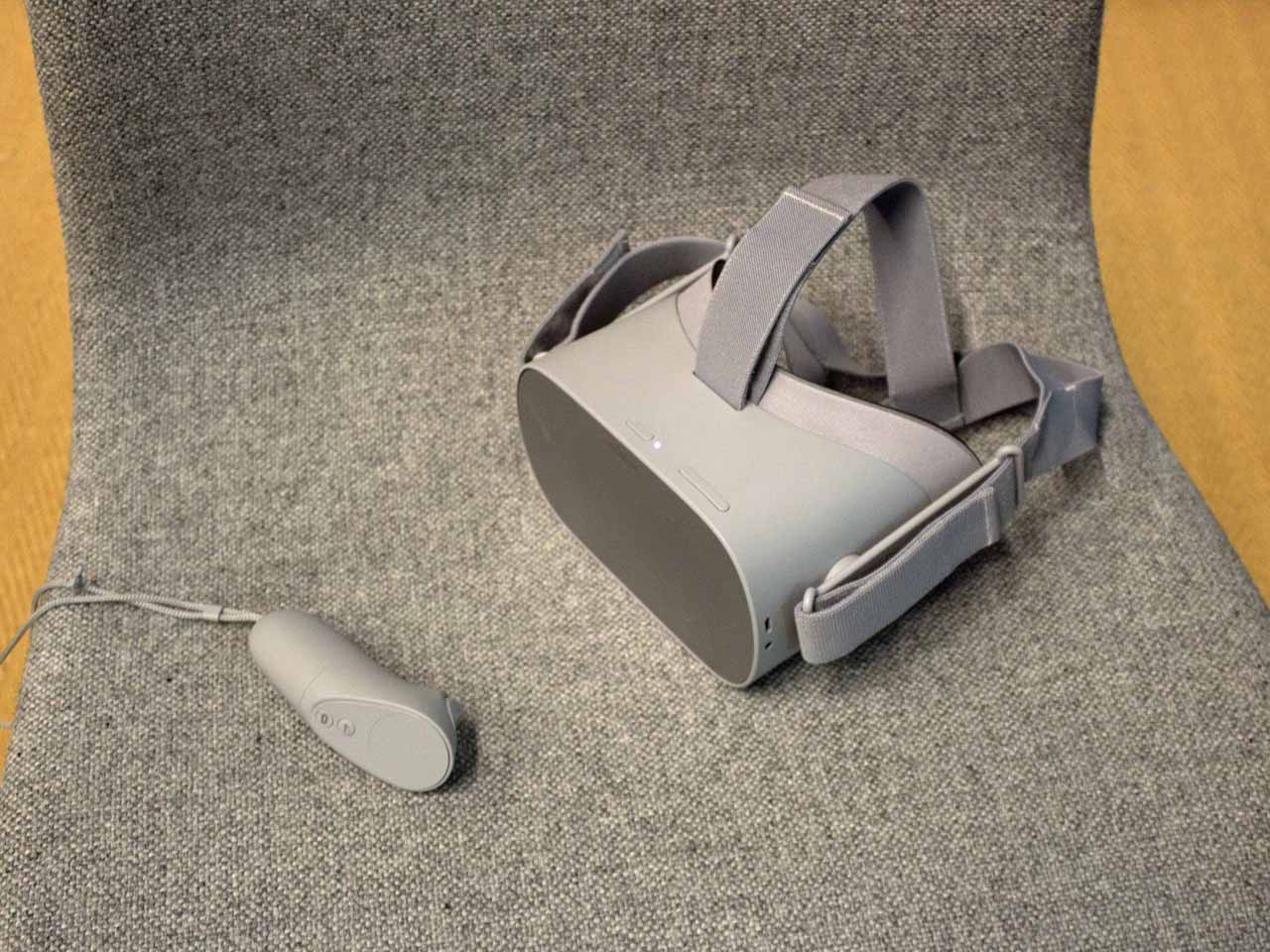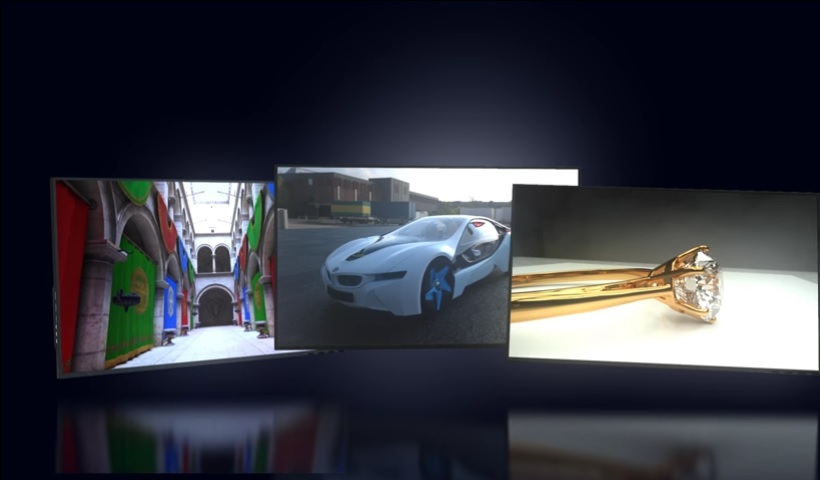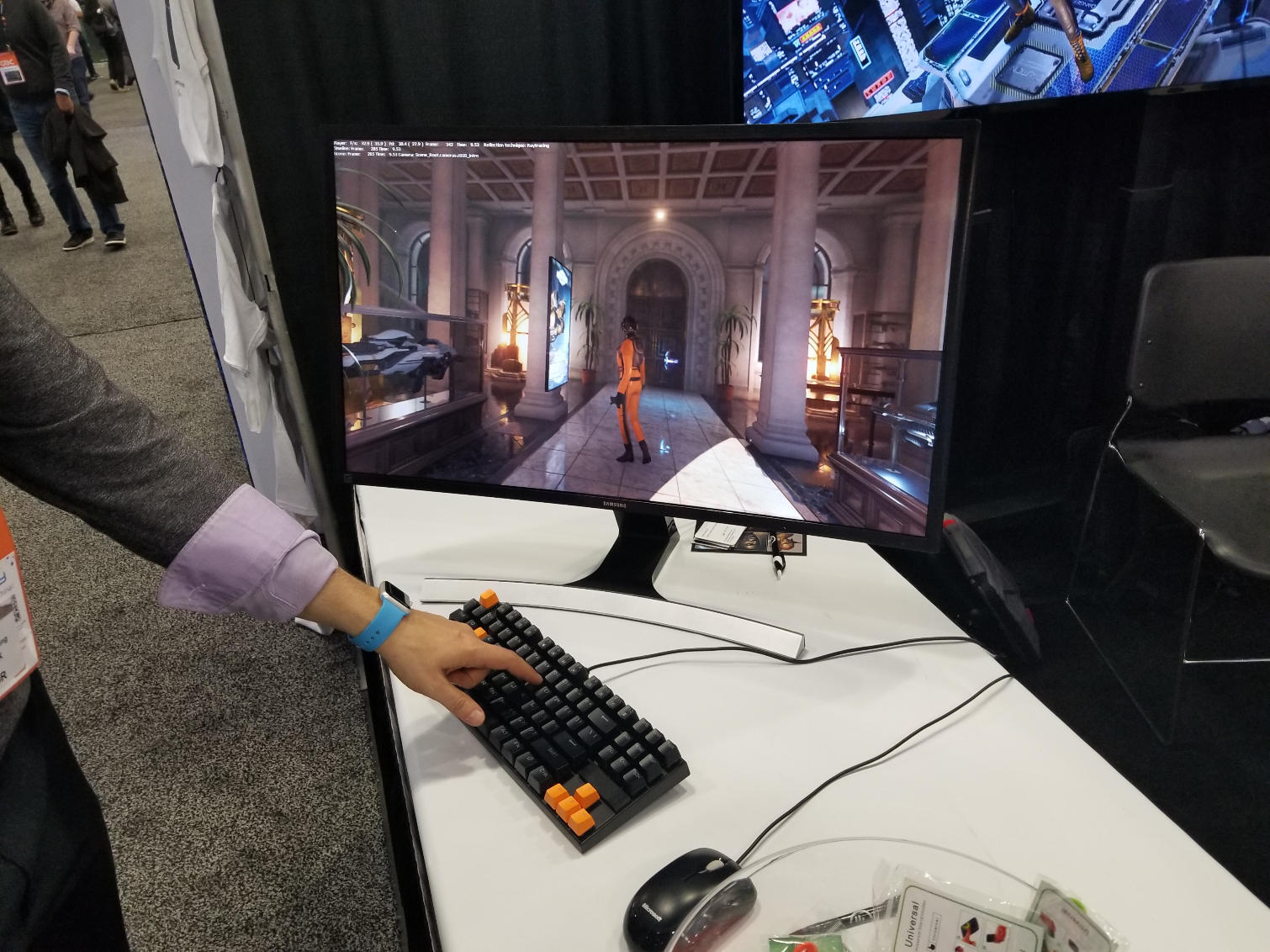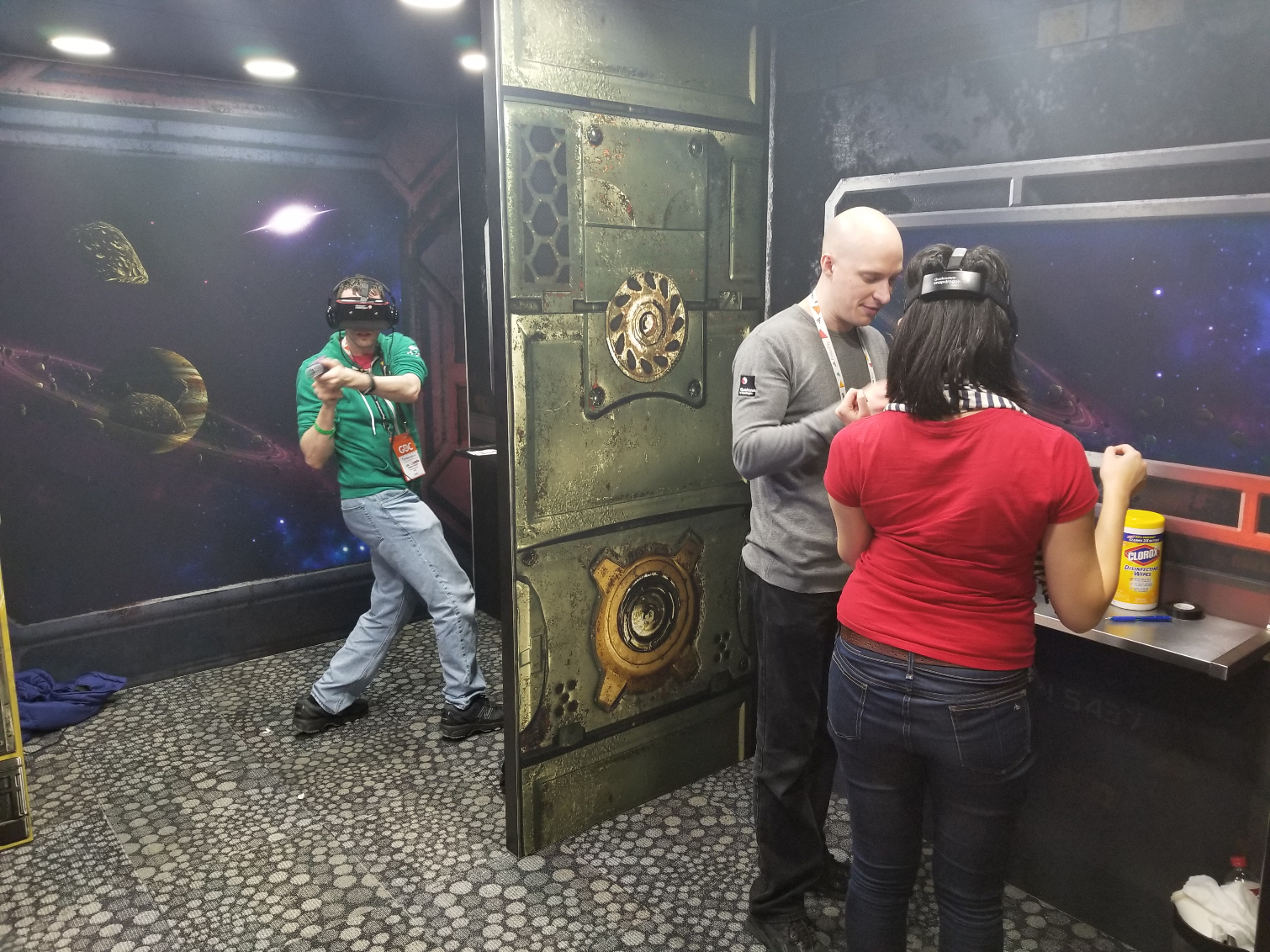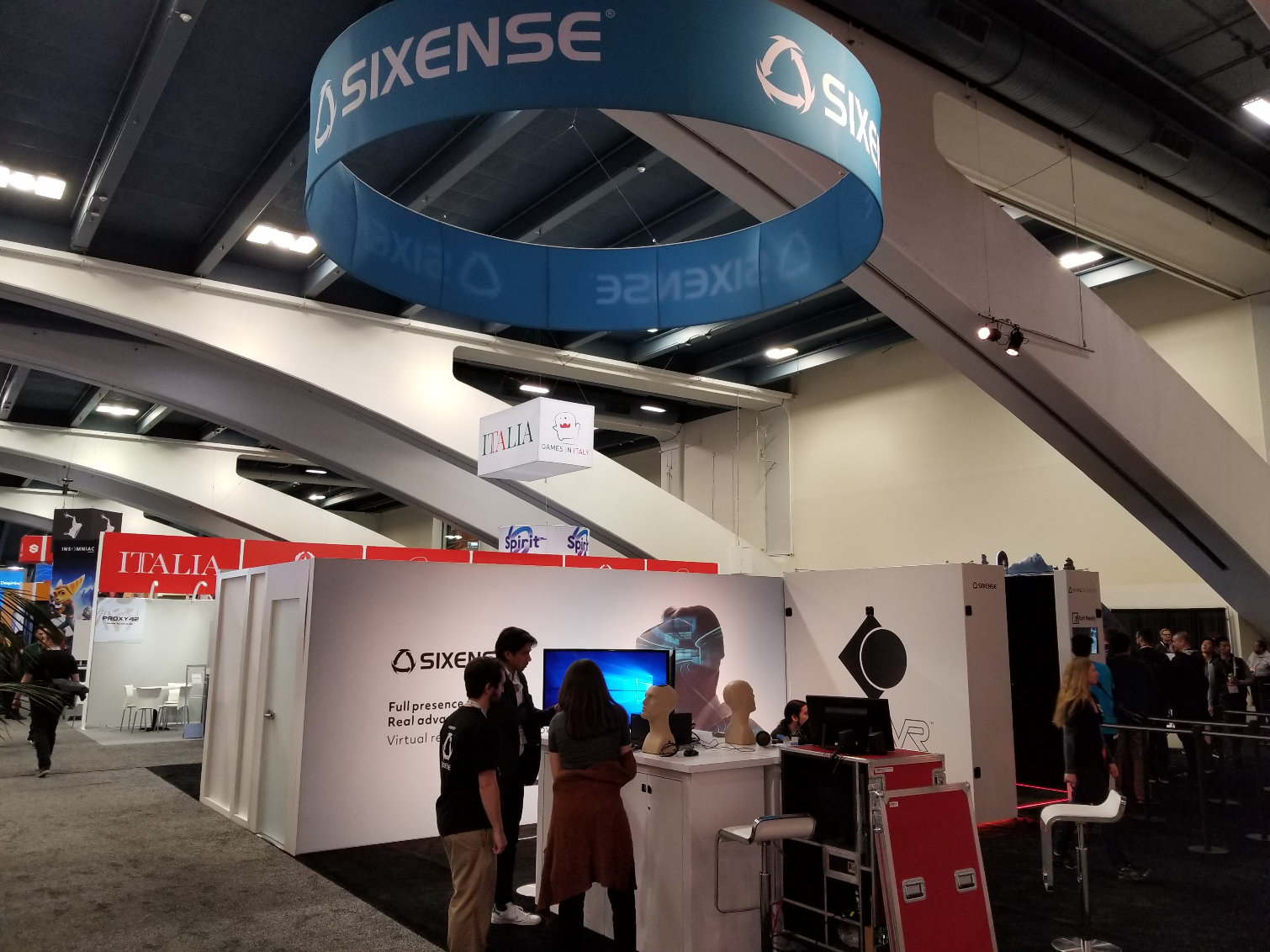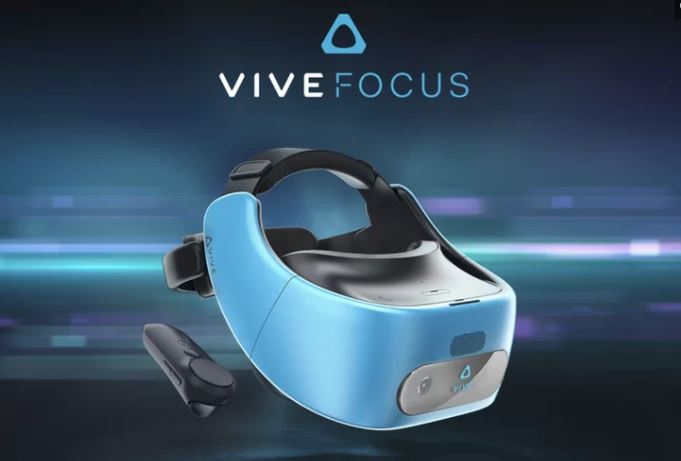GDC 2018 Highlights: VR, Ray Tracing & Atari
Gaming Overload
The Game Developers Conference (more commonly known as GDC) is jam-packed with sessions and tutorials geared toward developers, but it also features a bustling show floor brimming with the latest in gaming technology.
Hardware and software vendors make some of their biggest announcements of the year at GDC. Although we didn't hear any GPU news from either AMD or Nvidia, there was still plenty of action to keep us busy. Much like last year, GDC 2018 was loaded with PC, VR, AR, and MR hardware running the latest games.
Join us as we recap our trip through the show floor.
MORE: All Gaming Content
The Atari VCS Debuts
Atari is returning to the gaming market after a 20-year hiatus. Its new VCS, formerly known as the Ataribox, debuted at GDC. Naturally, we jumped at the chance to take a closer look at Atari's hardware, though the company isn't running game demos yet.
We learned that the retro-styled device, inspired by the 1977 VCS 2600, supports modern features like video streaming, 4K displays, Wi-Fi, Bluetooth, and voice commands. While it technically supports any Linux-compatible game, hardware performance limitations will narrow the list. Atari tells us that games like The Witcher 3 and the latest Call of Duty won't run at 60 FPS. However, the company is testing less demanding PC titles, such as Borderlands, to see if they will meet its frame rate targets.
Under the hood, expect to find an as-yet-undisclosed AMD APU that Atari says will deliver Switch-like performance levels. Representatives told us that the device should sell between $250 and $300, and include a joystick and Xbox-styled controller. The company will announce the pre-order date in April.
Get Tom's Hardware's best news and in-depth reviews, straight to your inbox.
MORE: Best Gaming Monitors
We Go Hands-On With The Oculus Go
Oculus isn't selling its Go yet, so a lot of the hardware details are still closely-guarded secrets. We did get an opportunity to go hands-on with the HMD at GDC, though. Of course, a $200 tether-less HMD isn't going to give you the rich, immersive experience you'd expect from a Rift backed by a high-end PC. But it was surprisingly capable as we played through Anshar Online, a cross-platform space shooter.
The HMD is light and well-balanced, and it doesn't require a gaming rig or smartphone. Oculus' controller is small and intuitive, though perhaps a bit too small for our liking. While the WQHD (2560x1440) LCD display is plenty bright, we did notice that our spaceship disappeared a few times during our demo. This is early hardware, after all.
During a panel session, Oculus outlined a few details of the dynamic clock control mechanisms for the Go's Snapdragon 821 SoC. Again, though, details are still light. We expect to learn more at Facebook's F8 conference later this year.
MORE: Best Virtual Reality Headsets
The Vive Pro Pops Up With A Big Price Tag
HTC announced that the Vive Pro is available for pre-order at an eye-watering $800. Its new headset comes bristling with new features, like a high-resolution 1440x1600 Samsung screen, dual front-facing Chaperone cameras, integrated headphones, and support for Valve's SteamVR Tracking 2.0 technology.
We spotted the Vive Pro at DisplayLink's booth, where the company was showing off multi-user wireless VR capabilities using its DisplayLink XR. The device employs Intel 60 GHz WiGig antennas and DisplayLink's own codec technology.
Not surprisingly, we also found the Vive Pro in Valve's suite.
HTC should start shipping on April 5th. Meanwhile, the company slashed pricing on its original Vive to $500.
MORE: All Virtual Reality Content
Nvidia's Real-Time Ray Tracing
Nvidia made a slew of announcements at the show, including a real-time ray tracing demo of Epic Games' "Reflections." The short Star Wars clip was meant to highlight Nvidia's newly-announced RTX, a combination of software and hardware that enables real-time ray tracing effects. The demo ran on Nvidia's DGX Station featuring four Volta V100 GPUs, which is now on sale for $49,900. That's 25% off the normal $69,000 price tag for you value-seekers.
The fact that Nvidia had to run its demo on a machine capable of 500 TFLOPS speaks to the obvious: we won't see full real-time ray tracing on desktop PCs anytime soon. But next-generation titles will use the technology to render certain portions of scenes, such as shadows, reflections, and ambient occlusion.
The demo also used Microsoft's new DirectX Raytracing (DXR) API, which is supported by game engines like Unreal Engine 4, Unity 5, and DICE's Frostbite. That means we may see real-world applications of ray tracing in our games sooner than later.
MORE: All Gaming Content
Bask In The Radeon Rays
AMD announced its open-source Radeon Rays library (formerly known as FireRays), which allows for asynchronous ray tracing computation. The software supports OpenCL 1.2, so it is hardware and operating system agnostic. That means it can run on non-AMD hardware, along with Windows, MacOS, and Linux.
AMD also announced that its Vulcan-based ProRender now supports real-time GPU acceleration of ray tracing. This update merges rasterization with real-time ray tracing to generate photo-realistic 3D images, but is currently limited to professional applications that use the ProRender plug-in.
Ray tracing facilitates realistic rendering, but is of course incredibly compute-intensive. A hybrid approach uses ray tracing to compute light effects like reflections, shadows, and transparency, while bulkier structures and surfaces are rendered with traditional rasterization. AMD's technology is intended to provide the best mix of performance and quality, allowing developers to adjust the ratio of rasterization and ray tracing to find a best fit for their needs.
MORE: Best Gaming Monitors
All This Ray Tracing; Let's Benchmark It!
With industry heavyweights like Nvidia, AMD, and Microsoft paving the way for ray tracing in games, it only makes sense that we seek out a corresponding benchmark. To that end, Futuremark announced a new 3DMark ray tracing metric built on its Time Spy test.
The benchmark leverages Microsoft's aforementioned DXR API and will run on any DX12-capable hardware. It currently only uses ray tracing across 10-15% of the scene (one ray per pixel), while everything else is handled through traditional rasterization. But ray tracing is used for reflections and shadows.
Futuremark may change the exact ratio prior to release. However, company representatives tell us that rendering 20% of the scene with ray tracing is enough to bring a GeForce GTX 1080 Ti down to roughly 22 FPS. Although the benchmark is still being fine-tuned, it should be ready for prime time later this year.
MORE: Best Virtual Reality Headsets
Qualcomm Debuts New HMD Reference Platform
Qualcomm demoed its own reference VR HMD platform at this year's show. The new 845 Virtual Reality Development Kit (VRDK) comes packed with capabilities like room-scale 6DoF (SLAM) that supports a boundary system to keep you within a safe play space. The HMD also features Tobii EyeCore tracking hardware. And it supports HTC's Vive Wave open platform, so third-party headsets based on the reference design should support software developed with HTC's tools.
Qualcomm didn't specify a release date for the Snapdragon VRDK, but rather gave us general guideline of Q2'18.
MORE: All Virtual Reality Content
SiegeVR Demo At Sixense Booth
HTC Vive Studios and Sixense partnered to develop the VR eSports game SiegeVR, which debuted at GDC. We had a chance to demo their first-person medieval archery game in Sixense's booth.
The game sells for just $10 on Steam, and is available for the Oculus Rift, HTC Vive, and PlayStation VR. It features several multiplayer modes, such as competitive gallery, cooperative siege, and practice. We took our shot at the cooperative siege mode, which involves two players defending a castle from the atop a wall. Ever-growing hordes of enemies, aided by catapults, attempt to storm the castle, with only you and your partner's arrows to stop them.
MORE: All Gaming Content
The Vive Focus Spreads Its Wings
HTC announced that it is finally bringing the Vive Focus, a standalone VR headset, to the international market. The HMD is based on Qualcomm's 835 VRDK and comes with a 2880x1600, 75 Hz AMOLED display. It features inside-out 6DoF tracking to provide a fully-untethered world-scale VR experience. The headset also includes a nine-axis tracked motion controller.
The Focus is already available in China, where it retails for roughly $650 (after currency conversion).

Paul Alcorn is the Editor-in-Chief for Tom's Hardware US. He also writes news and reviews on CPUs, storage, and enterprise hardware.


